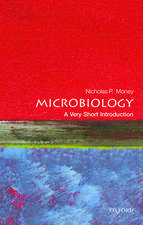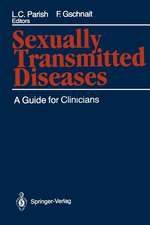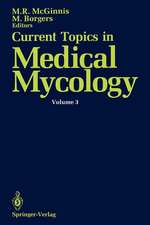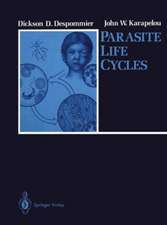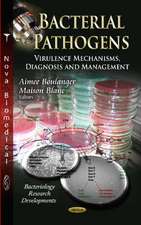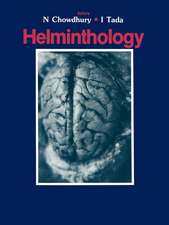Ruminant Pestivirus Infections: Virology, Pathogenesis, and Perspectives of Prophylaxis: Archives of Virology. Supplementa, cartea 3
Editat de Bernd Liess, Volker Moennig, Joachim Pohlenz, Gerhard Trautweinen Limba Engleză Paperback – 23 sep 1991
Din seria Archives of Virology. Supplementa
-
 Preț: 404.29 lei
Preț: 404.29 lei -
 Preț: 428.56 lei
Preț: 428.56 lei -
 Preț: 391.40 lei
Preț: 391.40 lei - 5%
 Preț: 381.54 lei
Preț: 381.54 lei - 5%
 Preț: 1102.31 lei
Preț: 1102.31 lei - 5%
 Preț: 1313.96 lei
Preț: 1313.96 lei - 18%
 Preț: 961.55 lei
Preț: 961.55 lei - 24%
 Preț: 820.02 lei
Preț: 820.02 lei -
 Preț: 393.52 lei
Preț: 393.52 lei - 5%
 Preț: 1014.12 lei
Preț: 1014.12 lei - 15%
 Preț: 600.26 lei
Preț: 600.26 lei - 18%
 Preț: 1234.94 lei
Preț: 1234.94 lei - 5%
 Preț: 384.80 lei
Preț: 384.80 lei -
 Preț: 414.30 lei
Preț: 414.30 lei -
 Preț: 399.29 lei
Preț: 399.29 lei -
 Preț: 401.24 lei
Preț: 401.24 lei -
 Preț: 401.03 lei
Preț: 401.03 lei -
 Preț: 424.33 lei
Preț: 424.33 lei
Preț: 397.76 lei
Nou
Puncte Express: 597
Preț estimativ în valută:
76.11€ • 81.39$ • 63.46£
76.11€ • 81.39$ • 63.46£
Carte tipărită la comandă
Livrare economică 17 aprilie-01 mai
Preluare comenzi: 021 569.72.76
Specificații
ISBN-13: 9783211822791
ISBN-10: 3211822798
Pagini: 284
Ilustrații: VIII, 271 p. 78 illus.
Dimensiuni: 210 x 279 x 15 mm
Greutate: 0.64 kg
Ediția:Softcover reprint of the original 1st ed. 1991
Editura: SPRINGER VIENNA
Colecția Springer
Seria Archives of Virology. Supplementa
Locul publicării:Vienna, Austria
ISBN-10: 3211822798
Pagini: 284
Ilustrații: VIII, 271 p. 78 illus.
Dimensiuni: 210 x 279 x 15 mm
Greutate: 0.64 kg
Ediția:Softcover reprint of the original 1st ed. 1991
Editura: SPRINGER VIENNA
Colecția Springer
Seria Archives of Virology. Supplementa
Locul publicării:Vienna, Austria
Public țintă
ResearchCuprins
Pestiviruses—taxonomic perspectives.- Molecular characterization of hog cholera virus.- Bovine viral diarrhea virus genomic organization.- Bovine viral diarrhea virus proteins and their antigenic analyses.- A “zinc finger-like” domain in the 54 KDA protein of several pestiviruses.- BVD Monoclonal Antibodies: relationship between viral protein specificity and viral strain specificity.- Correlation of bovine viral diarrhoea virus induced cytopathic effects with expression of a biotype-specific marker.- Cytopathogenicity of pestiviruses isolated post mortem from cattle.- Diaplacental infections with ruminant pestiviruses.- The pathways for bovine virus diarrhoea virus biotypes in the pathogenesis of disease.- Border disease of sheep—Aspects for diagnostic and epidemiologic consideration.- A study of some pathogenetic aspects of bovine viral diarrhea virus infection.- Distribution of antigen of noncytopathogenic and cytopathogenic bovine virus diarrhea virus biotypes in the intestinal tract of calves following experimental production of mucosal disease.- Clinical and virological observations of a mucosal disease outbreak with persistently-infected seropositive survivors.- Insertion of cellular sequences in the genome of bovine viral diarrhea virus.- Congenital curly haircoat as a symptom of persistent infection with bovine virus diarrhoea virus in calves.- Identification and production of pestivirus proteins for diagnostic and vaccination purposes.- Surveillance of cattle herds for bovine viral diarrhoea virus (BVDV)-infection using data on reproduction and calf mortahty.- Flow cytometric detection of bovine viral diarrhoea virus.- Identification of cattle infected with bovine virus diarrhoea virus using a monoclonal antibody capture ELISA.- Detection of borderdisease virus in sheep efferent lymphocytes by immunocytochemical and in situ hybridisation techniques.- Bovine viral diarrhea virus infection: rapid diagnosis by the polymerase chain reaction.- cDNA probes for the detection of pestiviruses.- Detection of persistent bovine viral diarrhea virus infections by DNA hybridization and polymerase chain reaction assay.- Differentiation of pestiviruses by a hog cholera virus-specific genetic probe.- Poster presentations.- Lesions in aborted bovine fetuses and placenta associated with Bovine Viral Diarrhoea virus infection.- Immunological reactivity of bovine viral diarrhea virus proteins after proteolytic treatment.- Polymerase chain reaction amplification of segments of pestivirus genomes.- Production of monoclonal antibodies to study the molecular biology of bovine viral diarrhea virus.- Determination of level of antibodies to bovine virus diarrhoea virus (BVDV) in bulk tank milk as a tool in the diagnosis and prophylaxis of BVDV infections in dairy herds.- BVD-virus infection in goats — experimental studies on transplacental transmissibility of the virus and its effect on reproduction.- BVD virus isolation techniques for routine use in cattle herds with or without previous BVD history.- Molecular characterisation of the coding region for the p125 from homologous BVDV biotypes.- Progeny of sheep persistently infected with border disease virus.

